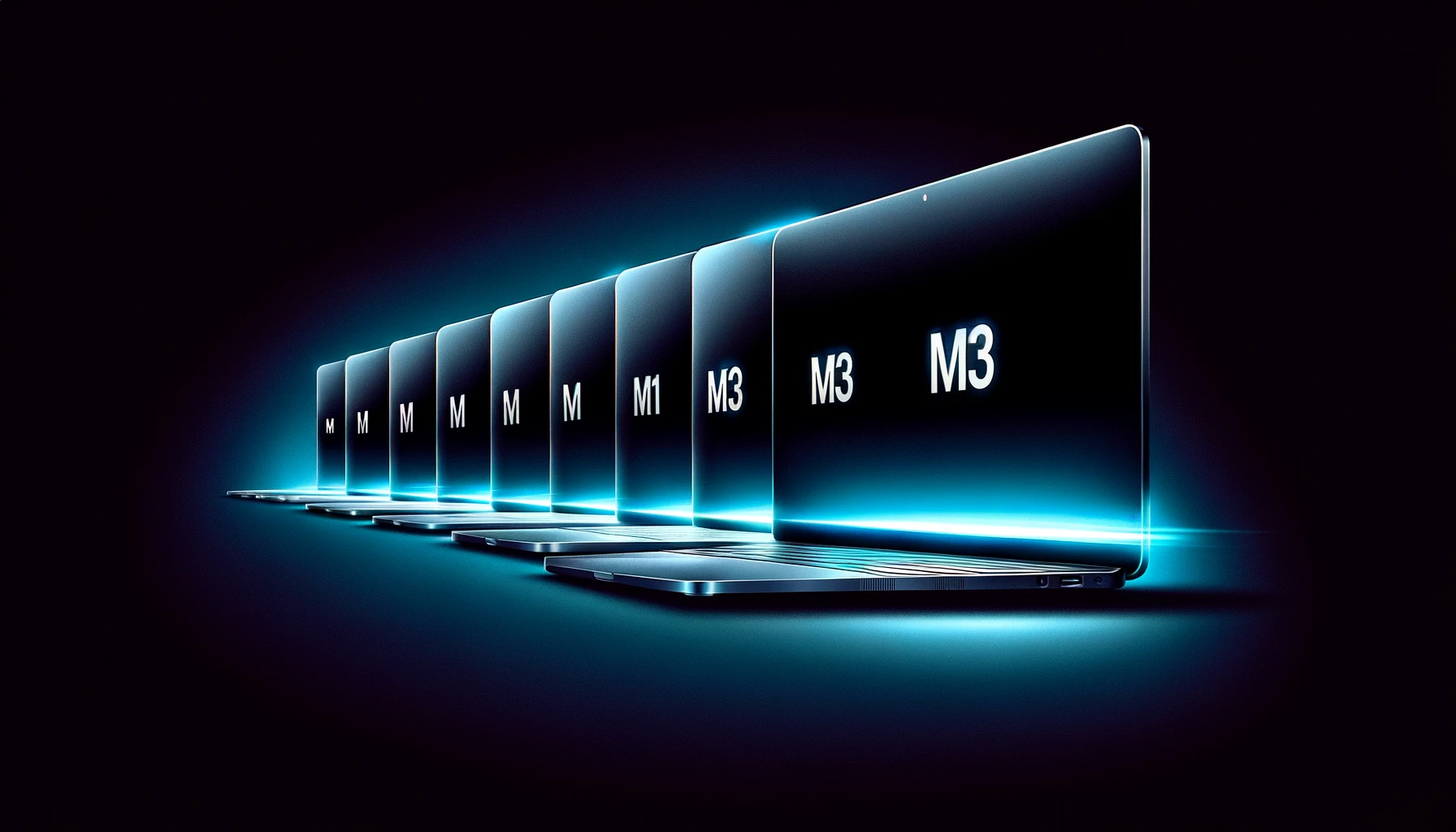
Apple has once again set the bar high in the laptop market with its latest refresh of the MacBook Air series, incorporating the cutting-edge M3 chip into its most beloved laptops. This significant update ushers in a new era for the MacBook Air, with notable changes in pricing, performance, and design, maintaining Apple’s reputation for innovation and quality.
The Transition to M3: What’s New and What’s Out
The tech giant has made a strategic move by discontinuing the M1 MacBook Air, a model that has been a staple in its lineup for over three years. Replacing it is the M2 MacBook Air, now repositioned as Apple’s entry-level option with a starting price of $999. This shift marks a pivotal moment in Apple’s product strategy, emphasizing the company’s commitment to bringing the latest technology to its customers at various price points.
The introduction of the M3 chip represents a leap forward in performance and efficiency. Apple’s latest-generation processors now power new 13- and 15-inch MacBook Air models. The pricing structure has been adjusted accordingly, with the 13-inch model starting at $1,099 and the 15-inch variant at $1,299. These models are set to hit the market on March 8, indicating Apple’s readiness to meet consumer demand swiftly.
Design and Features: A Closer Look
Despite the internal upgrades, the new MacBook Airs retain the design ethos of the M2 versions. This continuity ensures that users familiar with the previous generation will find the transition seamless. However, Apple has not shied away from making improvements where they matter:
- Slightly Larger Displays: The new models boast slightly larger screens, complete with a prominent notch that has become a distinctive feature of Apple’s design language.
- Redefined Aesthetics: Unlike the older M1 and late-Intel-era Airs, the new MacBook Airs feature a non-tapered, yet still slim and lightweight chassis, ensuring they remain portable without sacrificing durability.
- Enhanced User Interface: Users will appreciate the larger trackpads and refined keyboards, which promise an improved typing and navigation experience.
- MagSafe Charging: The inclusion of a MagSafe port for charging underscores Apple’s commitment to convenience and user safety.
Performance Upgrades: The M3 Chip at Heart
At the core of the new MacBook Air models is the M3 chip, which brings substantial performance improvements and new capabilities:
- No Processor Upgrade Options: All new Air models exclusively use the M3 chip, signaling a focus on streamlined offerings. The 13-inch model features a slightly modified version of the M3 with 8 GPU cores, with an option to upgrade to a 10-core GPU for an additional $100. In contrast, all 15-inch models come equipped with the full 10-core GPU M3 chip.
- Dual External Display Support: A notable enhancement is the M3 chip’s ability to drive two external displays when the laptop’s lid is closed, a feature not available in older models.
- Wi-Fi 6E and AV1 Video Codec: The laptops also support the latest Wi-Fi 6E standard and hardware-accelerated video decoding for the AV1 codec, ensuring faster internet speeds and better video streaming capabilities.
Pricing, Availability, and Specifications
The revamped MacBook Air lineup is not only about performance upgrades but also offers a variety of configurations to suit different user needs and budgets:
MacBook Air Models and Pricing
| Model | Display Size | Starting Price | Processor | GPU Cores | RAM & Storage Options |
|---|---|---|---|---|---|
| MacBook Air M3 | 13-inch | $1,099 | M3 (8-core GPU) | 8/10 | 8GB-24GB RAM, 256GB-2TB Storage |
| MacBook Air M3 | 15-inch | $1,299 | M3 (10-core GPU) | 10 | 8GB-24GB RAM, 256GB-2TB Storage |
Performance Insights:
- The MacBook Air models with the M3 chip are expected to deliver performance on par with the 14-inch M3 MacBook Pro, which starts at $1,599. However, the MacBook Pro’s inclusion of a cooling fan might provide it with an edge in handling heavy workloads more efficiently.
- Apple’s claim of up to 60% faster performance than the M1 chip with the new M3 processor highlights the significant advancements in efficiency and power.
The Future of Apple’s Mac Lineup
While the MacBook Air takes a giant leap forward, Apple’s desktop offerings, including the Mac mini, Mac Studio, and Mac Pro, await their turn for an M3 update. This selective refresh strategy might suggest Apple’s intention to synchronize product updates across its desktop range in the future, aiming for a cohesive ecosystem.
Key Takeaways
- Entry-Level Shift: The M2 MacBook Air becomes Apple’s new $999 base model as the M1 version is phased out.
- Design Consistency: The new MacBook Airs maintain the design language of their predecessors while introducing minor yet impactful improvements.
- M3 Chip Dominance: With no option for processor upgrades, the M3 chip standardizes performance across the new Air lineup, emphasizing Apple’s focus on delivering cutting-edge technology.
- Enhanced Connectivity and Media Support: Support for Wi-Fi 6E and AV1 video codec ensures that users enjoy faster internet speeds and improved video streaming.
- Desktop Updates Pending: Apple’s desktop Macs are yet to receive the M3 treatment, hinting at potential future updates to unify the Mac ecosystem.
Apple’s latest update to the MacBook Air lineup not only redefines its entry-level offering but also reinforces its commitment to innovation and quality. By integrating the M3 chip, Apple ensures its users have access to unparalleled performance, making the new MacBook Air models a compelling choice for professionals and enthusiasts alike. As the tech world eagerly awaits the impact of these updates, Apple continues to lead the way in reimagining what laptops can be.
Related News:
Featured Image courtesy of DALL-E by ChatGPT
